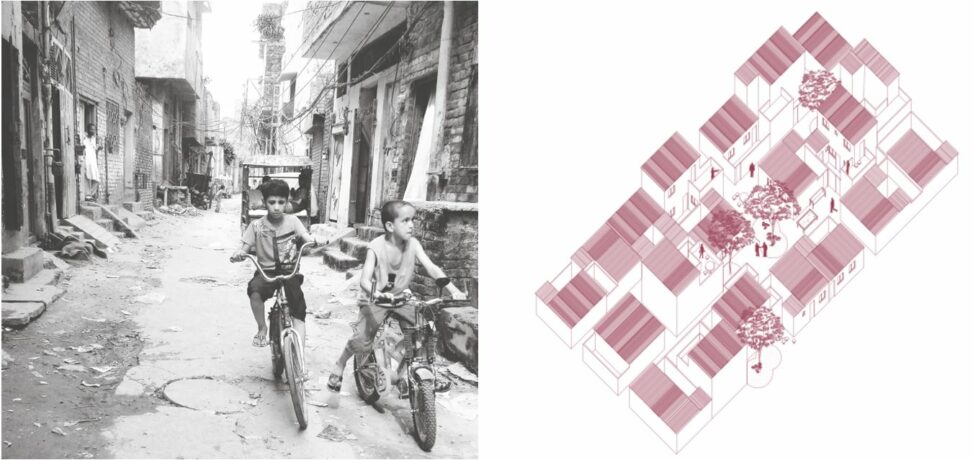Multilayered public spaces as productive assets towards more sustainable informal settlements: the case study of Lahore, Pakistan
Informal settlements are one of the critical challenges of urbanism in the Global South. They cannot merely be addressed through hard practices of demolition and eviction since they can often be incrementally upgraded on the same site. In the context of the increasing population living in informal settlements around the globe, the recognition of their permanent condition has to be realized. Likewise other developing countries, in Pakistan a large number of informal housing exists and Lahore, which is the second-most populous city around 11.13 million, houses innumerable informal settlements. The research presents an idea that there is a need for a shift in mindset where an informal settlement is not purely depicted as only something negative but can be viewed as an opportunity to understand different ways of seeing and thinking about the city.
In informal settlements, like the built-up structure, public spaces are formed and shaped through self-help-based approach and processes. However, unlike the former, little understanding has been achieved mainly because they are often seen as vacant spaces with negligible value. Public spaces may refer to the ownership of a public body but when such spaces are appropriated, they are communal in sense of their consumption. Such spaces play a pivotal role in understanding societal need that cannot be realized by the individual and serves multiple purposes beyond the leisure/commerce. Moreover, public spaces also hold symbolic meaning such as (self-)expression, sociality, politics, culture, and hence, it can be said that such spaces are multilayered. By multilayered, it means different elements on top of each other that functions at the same time in different ways. Besides this, multilayered aspect depicts various interests, uses, meaning, and also different framework of public space coming together in one space. Therefore, it is vital to investigate the role of public spaces in the physical and social dynamics of informal settlements, which also relates to their improvement and consolidation at later stages.
Keeping in view of this, the doctoral research intends to explore the production, construction, and spatial process of public spaces in relation to societal and communal use, assets and needs in Lahore informal settlements. The research examines the subject, focusing on main research question: How multi-layered public spaces be an asset in bringing urban incremental change of informal neighbourhoods towards a greater sustainability?
This PhD-study is structured around an in-depth qualitative investigation pertinent to three different kinds of informal settlements in Lahore and their interconnection with the adjacent urban fabric. The case study methodology helps to analyze socio-spatial appropriation within these settlements by gaining insight about their evolution, typology, and trajectories of production of spaces, looking for the assets and issues of those neighbourhoods, understand them in their locality and linked to a networked surrounding urban fabric that can be the base for an urban upgrading. The findings will add to the existing knowledge on discourses about urban informal settlements, sustainable upgrading by taking the urban connectivity with the surrounding fabric into account.
Keywords: Urbanism, Sustainable Development, Spatial transformation, Socio-Spatial appropriation, Slum Upgrading, Public Spaces
PhD Project by Drs. Mashhood Arif (Promotor: Prof. Dr. Yves Schoonjans, co-promotor: Prof. Dr. Oswald Devisch)
*Source of pictures: LEFT Photo taken by Mashhood Arif in Zia Colony (informal settlement) in Lahore, Pakistan. RIGHT Drawing produced by Cedric Vandenberghe, Marta Ribeiro and Raquel Borges. Research Elective Collective Spaces. KU Leuven

Comments are closed.